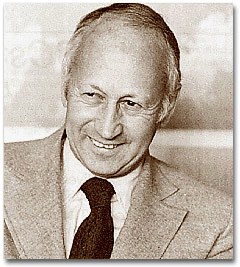
Norman Cousins’ Anatomy of an Illness is a groundbreaking exploration of the mind-body connection in healing and recovery. It is based on Cousins’ personal experience battling a severe illness and highlights his unconventional approach to treatment, which ultimately led to his recovery. The book challenges traditional medicine’s emphasis on pharmaceutical interventions and argues that a patient’s attitude, emotions, and active participation play a crucial role in healing.
The Onset of Illness and Medical Diagnosis
Cousins, a renowned journalist, was diagnosed with a severe and life-threatening form of arthritis known as ankylosing spondylitis in 1964. His symptoms included extreme pain, fever, and joint immobility. Doctors gave him a grim prognosis, stating that his chances of full recovery were almost nonexistent. Dissatisfied with the hospital environment and its impersonal treatment methods, Cousins decided to take an active role in his own healing.
The Power of Positive Emotions
A central theme of the book is Cousins’ belief that emotions, particularly laughter and hope, have a profound impact on the body’s ability to heal. He hypothesized that negative emotions such as stress and anxiety could exacerbate illness, whereas positive emotions could enhance the body’s resilience. Inspired by his research, he created a regimen that included watching comedy films, such as Marx Brothers movies and Candid Camera, to induce laughter. He observed that ten minutes of deep belly laughter provided him with two hours of pain-free sleep, reinforcing his belief in the healing power of humor.
Vitamin C and Alternative Therapies
In addition to laughter therapy, Cousins experimented with high doses of vitamin C. Although this approach was unconventional at the time, he believed that vitamin C could help reduce inflammation and strengthen his immune system. He worked closely with his doctor, William Hitzig, to monitor his progress, and over time, he experienced significant improvement in his condition. His case illustrated the importance of collaboration between patients and physicians in exploring treatment options beyond conventional medicine.
Critique of the Medical System
Cousins was highly critical of the hospital environment, which he found to be counterproductive to healing. He observed that hospitals often subjected patients to unnecessary tests, excessive medication, and a rigid system that prioritized institutional efficiency over patient well-being. He argued that modern medicine focused too much on treating diseases rather than addressing the patient as a whole. His experiences led him to advocate for a more holistic approach to healthcare—one that incorporates emotional well-being, nutrition, and patient involvement.
The Role of the Placebo Effect and Mind-Body Connection
A significant part of the book explores the placebo effect and the power of belief in healing. Cousins suggests that the mind has a strong influence over the body and that believing in one’s recovery can trigger physiological changes that promote healing. He references various medical studies that support the idea that patients who maintain a positive outlook and actively engage in their treatment often experience better health outcomes than those who passively rely on medical interventions.
Legacy and Impact
Anatomy of an Illness has had a lasting impact on both medical and psychological fields. It helped pave the way for the growing acceptance of holistic medicine, mind-body therapies, and the role of humor in healthcare. Cousins’ story inspired further research into psychoneuroimmunology—the study of how psychological factors influence the immune system. His work continues to serve as a testament to the power of optimism, resilience, and active participation in one’s health.
Conclusion
Cousins’ book is a compelling case for patient empowerment in the healing process. It challenges conventional medical practices and emphasizes the significance of emotional well-being in physical health. His story serves as an inspiring example of how attitude, laughter, and self-determination can contribute to overcoming illness. Anatomy of an Illness remains a timeless work that encourages both patients and medical professionals to rethink the nature of healing and the vital role of the human spirit in medicine.


